Low Oil Pressure Symptoms And Causes: What You Need To Know
When the oil pressure is low, oil cannot flow easily and coat vital engine components. As a consequence, direct metal-to-metal contact among engine components results in severe wear and tear and overheating. Continuous low oil pressure leads to an early engine death.
So, what are the symptoms and causes of low oil pressure? The symptoms include an oil light, leaks, and reduced engine performance. Other symptoms are a burning oil odor, clunking sound, engine overheating, and inconsistent pressure sensor readings. The causes include low oil, viscosity level, engine bearings, oil pressure sensor, oil pump, and filter.
Find out the solution to low oil pressure and whether it is safe to drive in this condition.
The 7 Symptoms Of Low Oil Pressure
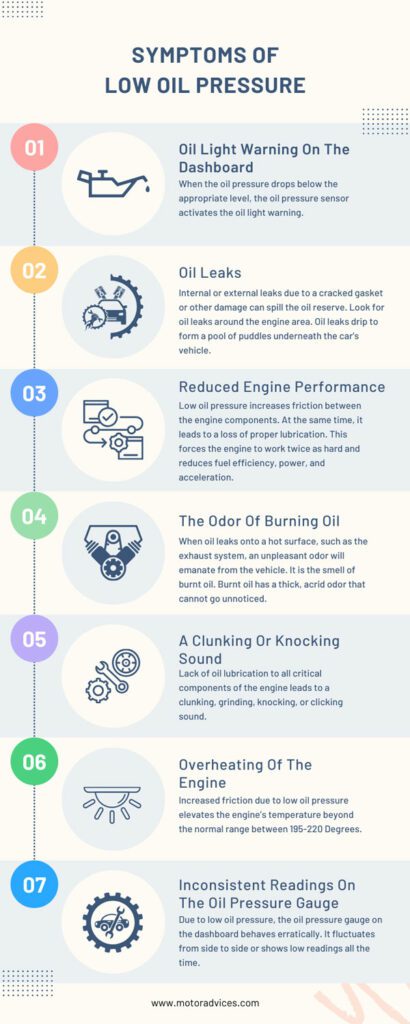
The symptoms of low oil light pressure are as follows:
Oil Light Warning On The Dashboard
When the oil pressure drops below the appropriate level, the oil pressure sensor activates the oil light warning. The oil light, shaped like an oil can, glows on your vehicle’s dashboard as a warning message.
Yellow oil light signifies an oil change while red light indicates a rapid drop in oil pressure.
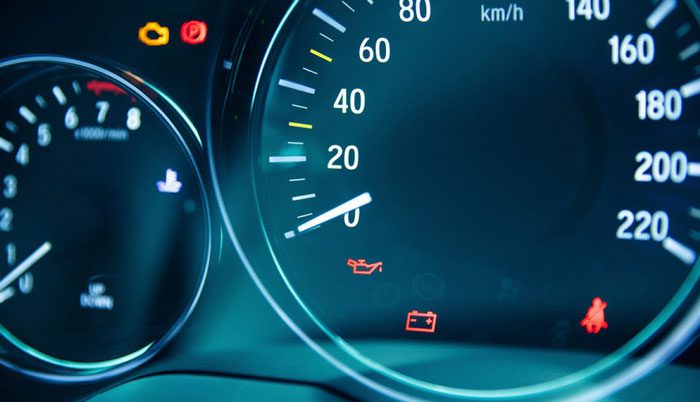
Oil Leaks
Internal or external leaks due to a cracked gasket or other damage can spill the oil reserve. Look for oil leaks around the engine area. Oil leaks drip to form a pool of puddles underneath the car’s vehicle.
Reduced Engine Performance
Low oil pressure increases friction between the engine components. At the same time, it leads to a loss of proper lubrication. This forces the engine to work twice as hard and reduces fuel efficiency, power, and acceleration.
The Odor Of Burning Oil
When oil leaks onto a hot surface, such as the exhaust system, an unpleasant odor will emanate from the vehicle. It is the smell of burnt oil. Burnt oil has a thick, acrid odor that cannot go unnoticed.
A Clunking Or Knocking Sound
Lack of oil lubrication to all critical components of the engine leads to a clunking, grinding, knocking, or clicking sound.
Due to increased friction, the valves, piston rods, crankshaft, camshaft, bearings, and other moving parts produce this sound.
Overheating Of The Engine
Increased friction due to low oil pressure elevates the engine’s temperature beyond the normal range between 195-220 Degrees. The engine temperature gauge on the dashboard slides towards the red indicator, implying an overheating of the engine.
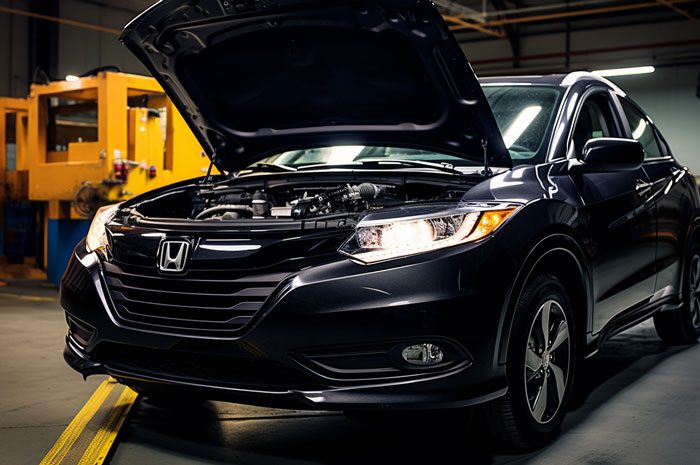
Inconsistent Readings On The Oil Pressure Gauge
Due to low oil pressure, the oil pressure gauge on the dashboard behaves erratically. It fluctuates from side to side or shows low readings all the time.
The 6 Causes Of Low Oil Pressure In A Car
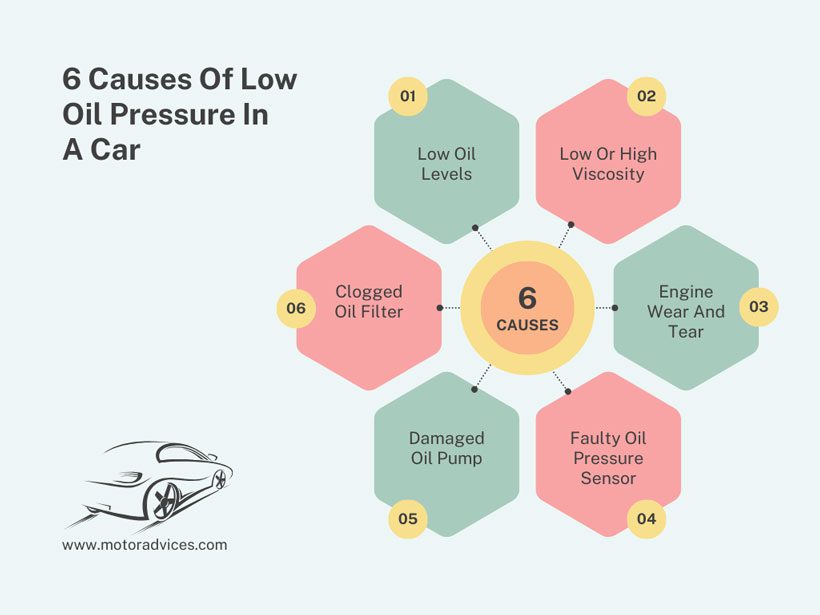
The following factors cause low oil pressure:
Low Oil Levels
Low engine oil levels cannot sufficiently lubricate all the vital engine components. As a consequence, the engine overheats and this leads to low oil pressure.
Besides low oil in the reserve, low oil levels can also result from internal or external leaks. Worn-out engine components, such as fuses or gaskets, can bring about these leaks.
Additionally, old oil in the system can lead to low oil levels. Old oil becomes sludgy and heavily contaminated from soot, dust, sand, and other particles. It can clog and prevent oil from flowing smoothly leading to low pressure.
Low Or High Viscosity
Every car manufacturer has a stipulated weight or grade of oil viscosity recommended in the owner’s manual. Viscosity refers to the thickness (high viscosity) or thinness (low viscosity) of oil density and flow speed.
When the oil viscosity fails to meet the particular car’s specifications, it can lead to low oil pressure. Low-viscosity oil generates less resistance to flow. It will trigger the oil pressure sensor to warn the driver of low oil pressure.
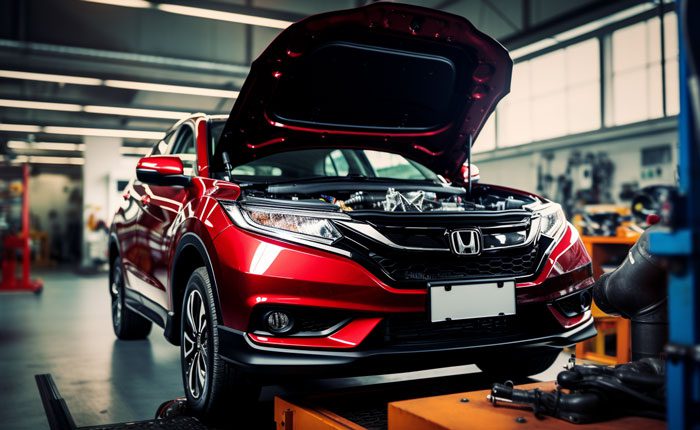
On the other hand, high-viscosity oil can produce high resistance to flow, leading to poor engine lubrication. This will also cause low oil pressure.
Temperatures can also slightly affect oil viscosity. Generally, higher viscosity oil is suggested during the summer or hot temperatures. Likewise, lower viscosity oil is recommended during the winter or cold temperatures.
Engine Wear And Tear
The engine crankshaft and camshaft bearings enable smooth rotation and reduce friction between moving parts. With time, these bearings wear out, and the holes through which they insert grow wider.
This reduces the tight restriction of flow responsible for creating oil pressure. Thus, excessive oil clearance without restriction leads to low oil pressure.
Besides that, worn-out piston rings can also reduce oil availability by allowing the oil to bypass the combustion chamber.
Faulty Oil Pressure Sensor
The oil pressure sensor monitors and measures the oil pressure in a vehicle. A faulty oil pressure sensor can falsely indicate a low oil pressure based on inaccurate readings.
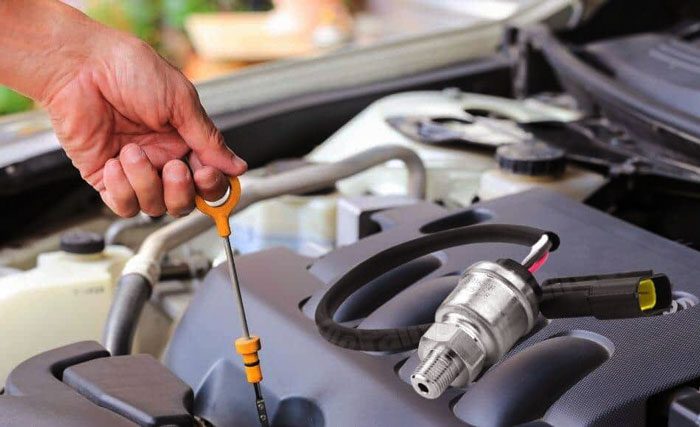
Damaged Oil Pump
The oil pump is responsible for circulating oil throughout the engine components. When the oil pump goes bad, the oil fails to reach all the necessary components of an engine. This leads to low oil pressure.
An oil pump can become clogged over time due to an accumulation of contaminants in the oil pickup tube. Alternatively, the main components inside the oil pump could be damaged by everyday wear and tear.
Clogged Oil Filter
The oil filter, as the name suggests, prevents harmful debris from entering the engine. Over time, the oil filter becomes clogged from usage. It has a pressure relief valve that transports the oil to the engine if the oil filter gets blocked.
However, this pressure relief valve along with the filter becomes clogged as well which triggers low oil pressure.
Watch the video below to learn more about the causes of low-oil pressure:
What Causes Low Oil Pressure? Troubleshooting And Causes Of Low Diesel Engine Oil Pressure.
How To Fix Low Oil Pressure?
Consider the following points when deciding to fix low oil pressure:
- Make sure to top up your engine oil level between the minimum and maximum mark on the dipstick. Also, you should schedule routine oil changes at intervals to avoid lubrication issues.
- Use the recommended viscosity oil specified in the owner’s manual. Ensure that the viscosity of the oil is compatible with your car.
- Worn-out engine bearings and piston rings should be replaced.
- A faulty oil pressure sensor needs to be replaced.
- A damaged oil pump and oil filter should also be replaced in favor of new ones.
Does Low Oil Pressure Affect Car Speed?
Low oil pressure does not directly impact the speed of a car. However, it can reduce engine performance, which can impede acceleration.
If you accelerate in a low oil pressure condition, your car will experience stalling, high fuel consumption, and power loss.

Is It OK To Drive With Low Oil Pressure?
No, you should not drive with low oil pressure. It can rapidly wear and tear your car’s engine components from increased friction and overheating. Eventually, your car will suffer a complete engine failure.
When the oil light appears, pull over immediately and shut off the engine. Call a nearby mechanic or tow your car to an auto repair shop.

FAQs
The frequently asked questions on low oil pressure are as follows:
Yes, low oil pressure can cause a rough idle. Lack of lubrication causes increased friction and resistance. This makes the engine function uneven, leading to a rough idle.
Oil pressure that falls below 20 psi can be considered as a low oil pressure value. The ideal oil pressure ranges from 25-65 psi.
It is estimated that the engine can run barely for 30 minutes or less than that.
Outro
Low oil pressure symptoms include oil light, leaks, reduced engine performance, clunking sound, engine overheating, and inconsistent pressure sensor readings. It happens due to low oil levels, viscosity, engine bearing, pressure sensor, oil pump, and oil filter.
Replace the damaged or defective components responsible for low oil pressure. Remember, do not drive a car on low oil pressure as it can lead to a complete engine failure. Take your car to a professional mechanic or an auto shop right away.

